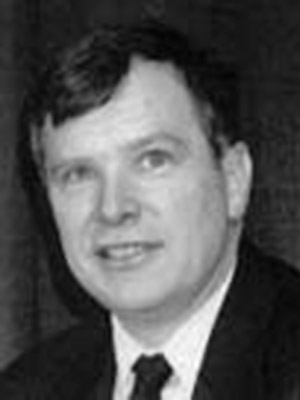
I have always enjoyed the technical side of geophysics, the science and the technology. But technology never seems to take me all the way. Any discovery that I have participated in has demanded that I abandon the safety of the ‘firm ground’ of science, and venture out on to the ‘soft ground’ of the interpretive art. The success stories that I can claim some part in are similar to this one:
In the late 70’s, I was working at Mobil Oil in northeast British Columbia. By some accident (or brilliant planning) an engineer was appointed as the Vice President of Exploration. He was an easy man to work for, as he wasn’t interested in how we did things, he just demanded results. He had a reputation for being a ‘bull in a china shop’.
He lived up to his reputation at one of the first meetings that I attended with him. A land man was delivering a long and qualified explanation of the problems before us, when he was interrupted with, “Save the bull…., can we do it or not?” The landman answered, “Yes, but someone may have to go to jail,” to which the VP responded, “Just make sure it is not me.” I never knew whether that meant proceed or not — but that was the end of the discussion.
My first direct encounter with him went something like this: Him: “ What the hell are you doing to find the rest of the reserves at Sierra, we’ve already produced more than you have mapped, and it’s still coming.”
Me: (timidly) “We have no budget for that area.”
Him: “So … what do you need?”
Me: “ 50 miles of 6 fold could cost $200,000.
Him: “I have slush funds bigger than that — get out of here and find the rest of that gas!”
At that time, we held a large land tract covering an area south of the Yoyo field including the two Mobil producing properties at Sierra and South Sierra. Our seismic coverage consisted of a 2-mile by 4-mile grid of single fold data. The Sierra reef was visible on this old data, but the smaller South Sierra reef was very subtle — a testament to the interpreters who found this field.
That season we shot a couple hundred miles of multifold data with 1 mile spacing in the vicinity of the producing reefs. At the end of the season our picture of the two producing reefs looked exactly as it did before — we saw no new extensions that could hold the unexplained reserves that continued to be produced. Going back to the VP with no drilling locations was not an option — we had to make something up.
The reefs in this area were about 300 feet high, and completely encased in shale. The tight limestone cap on the top provided a strong seismic event over the reefs at Yoyo and Sierra. This was easily duplicated on synthetic seismograms. On multifold data, even the smaller South Sierra reef could be mapped with some confidence.
The new seismic program contained a number of anomalous features that consisted of a loss of amplitude on the platform event upon which the reefs grew. Above this amplitude loss, there was no indication of a top of reef event. But these were all we had, and we desperately needed to deliver drill locations. The only glimmer of hope was one small non-productive limestone reef many miles to the north along the trend. This reef had been an enigma to me for years. The top of the reef — very strong on synthetics, was invisible on seismic. I could not explain it, but I did use it as an analog (not dwelling on the fact that it was entirely lacking in the porous dolomites that could provide a reservoir).
I contoured my map complete with 300-foot high invisible reefs, and proposed a drilling location on every one of them, secretly hoping that politics or budget would intervene before they were drilled. My senior colleagues would normally have been attacking my blatant ‘leg jumping’ interpretation and non-existent reef top reflections. But they appeared to appreciate my dilemma, and were probably quietly thankful that it was my neck on the line and not theirs.
As it turned out, the first well encountered the ‘invisible’ reef as mapped, complete with a thick pay zone. Only one of the locations drilled that first season failed to hit a reef. That abandoned hole was followed up years later with a successful well located a short distance away based on 3D seismic. I still don’t know where the ‘extra’ gas that instigated the original search was coming from, but I am sure my successors have figured it out.
I haven’t given up on technology. Today I can model the seismic response of small rugged heterogeneous features like these reefs. It may be too late to contribute to their discovery, but it will contribute to complete exploitation of their reserves.











Join the Conversation
Interested in starting, or contributing to a conversation about an article or issue of the RECORDER? Join our CSEG LinkedIn Group.
Share This Article